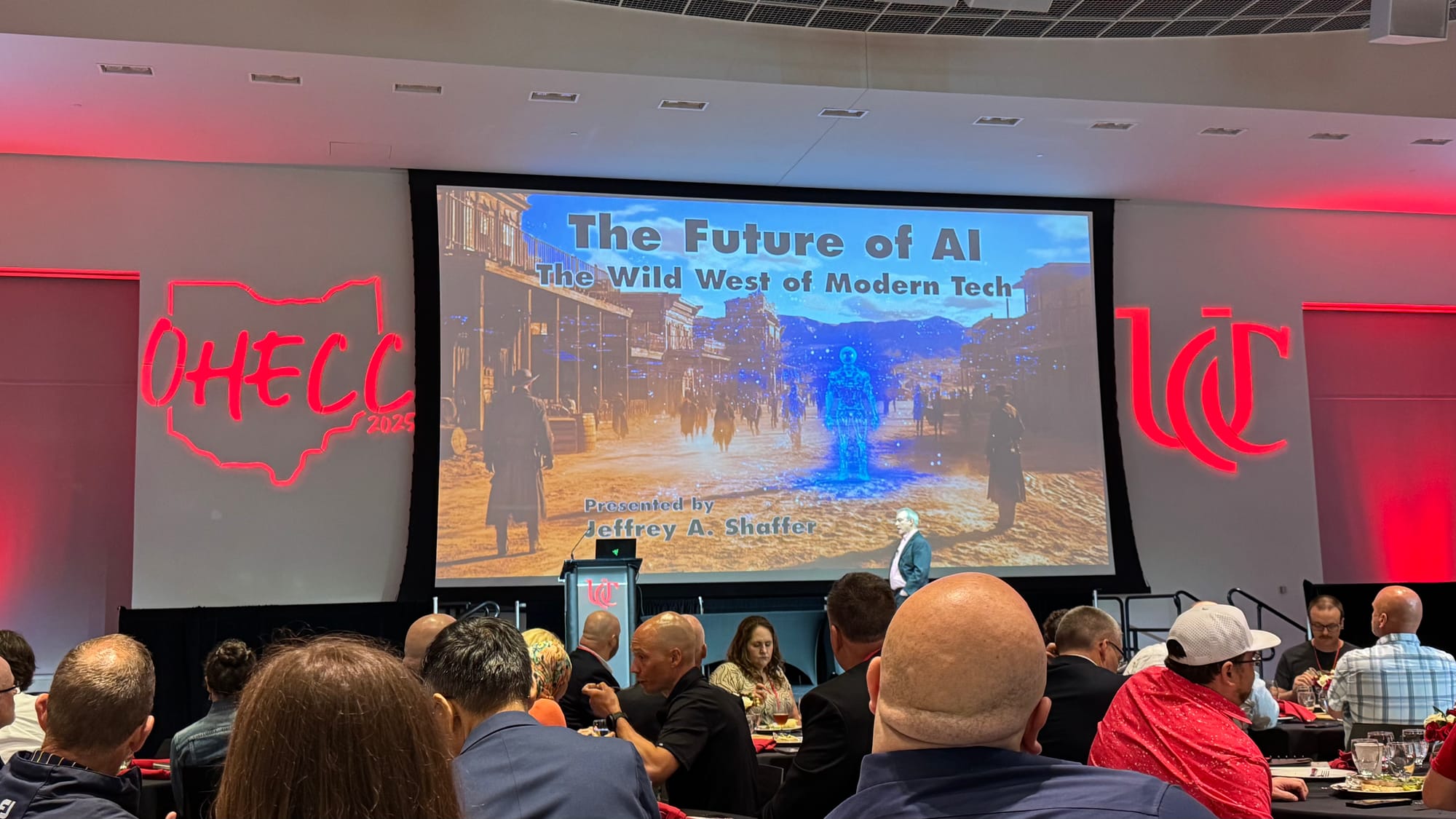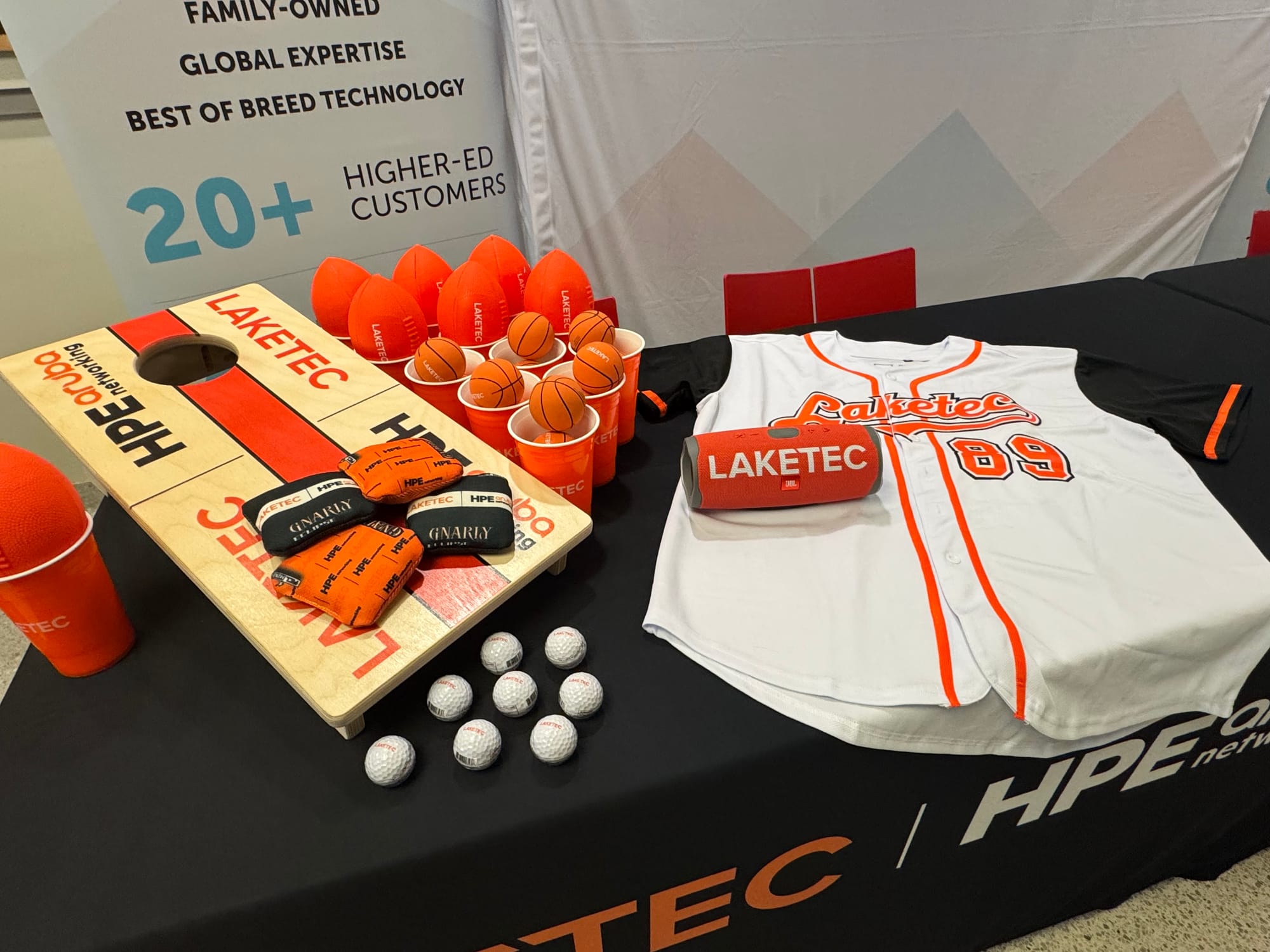Platform Engineering Is Revolutionizing Higher Ed

I just spent a few days (May 13-16, 2025) at the Ohio Higher Education Computing Council (OHECC) conference and I could tell there's a shift happening in campus IT. The hallway conversations, the sessions, some after hours discussions all revealed a recurring theme: platform engineering and automation have moved from a "cool to have" that only large enterprises and cloud scalers have and are moving to tangible use cases in higher ed.
Two standout sessions captured this for me:
University of Cincinnati: From ClickOps to GitOps
Jacob Swanson walked through UC's transformation from "let me click around in this console for hours" to "this pull request just built our entire environment in minutes." They've implemented a CI/CD pipeline powered by Terraform, CloudFormation and GitHub Actions that is not just faster, it's fundamentally better. These guardrails in code have created consistent, repeatable configuration which automatically deploys eliminating dreaded "who changed this setting?" panic attacks or "why is this environment different?" head scratchers.
Ohio University: Ansible AWX FTW
Ian Isham and Kyle Barstow at OU shared how they replaced their legacy Puppet workflows with Ansible AWX running on Kubernetes and GitHub Actions. The impact was immediate and measurable as deployment times dropped, patching cycles accelerated, and perhaps most importantly, their team finally reclaimed time to work on cooler stuff than babysitting servers.
These are early signals that Ohio schools are laying the foundation for true platform engineering self-service infrastructure, code defined process and honest-to-goodness feedback loops that don't involve filling out requests in tickets.

Why This Wave Is Building Now
The pressure is real. EDUCAUSE literally put "faster, better, cheaper" on its 2025 Top 10 list of IT issues, with automation called out specifically as the lever to pull. Even Internet2, the backbone of research and education networks, has been warning us about the lack of network automation adoption across campuses.
Let's be blunt: the institutions that automate first will slash operational costs, strengthen security posture and respond faster to faculty and student needs. In the zero sum game of enrollment competition and research prestige, these aren't just IT wins, they're existential advantages.
Network: Where Manual Workflows Still Reign
Most universities have dabbled in cloud pipelines, but the campus network remains manual procedures of tedious switch templates, change windows planned around finals and a prayer every time someone edits an ACL in production.
The automation opportunity here is enormous:
| Manual World | Automated World |
|---|---|
| Switch deployment: hrs/box | mins via template push |
| Change rollback: hunt through logs | git revert + pipeline redeploy |
| Outage root-cause: More hunting through logs | Real-time config diff & intent checks |
UC and OU both mentioned their successes with automation, validating what Kent State, Princeton and Dartmouth have already proven with 80-95% cuts in deployment time and trouble tickets.
Starting Is the Hard Part, Here's a Playbook
- Pick a contained use case: Don't boil the ocean. Start with a lab VLAN, a single dev AWS VPC or that one student services app everyone complains about. Early wins beat architectural perfection.
- Establish a source of truth: Git for code and NetBox (or similar) for network inventory keep humans and pipelines on the same page. Without this, you're just automating chaos.
- Automate the short happy path: First focus on basic provisioning, not every edge case. Let your team feel the dopamine hit before chasing full parity with manual processes.
- Build a cross functional team: Both UC's and OU's success stories featured collaboration. Silos kill automation momentum faster than anything.
- Measure reclaimed hours: Automation isn't about cutting staff, it's about buying back time for innovation. Measure it, review it and broadcast the wins.
- Iterate outward: Once confidence builds, expand to firewalls, identity workflows and eventually student facing services.

Where Getting Help Fits
For many campuses, the expertise and cycles to stand up that first pipeline just do not exist in-house. That's where a partner steeped in network automation, DevOps and higher ed reality can compress the timeline from "eternal study phase" to "success story."
If OHECC taught us anything, it's that Ohio campuses are ready. Some already have pipelines humming, many others are drafting roadmaps. Whichever camp you're in, the question is no longer if you'll automate, but how soon and whether or not you'll go it alone.
Final Takeaway
As I walked out of UC's Tangeman University Center, it hit me that the keynote theme "Transforming Higher Education Through Digital Innovation" isn't just a clever tagline, it's more like a deadline.
The schools that operationalize platform engineering now will deliver the seamless digital experience students expect while freeing their technologists to invent the future frameworks of learning. For everyone still weighing the leap: your peers just showed you it can be done and the first playbooks are written. Let's put them to work.

